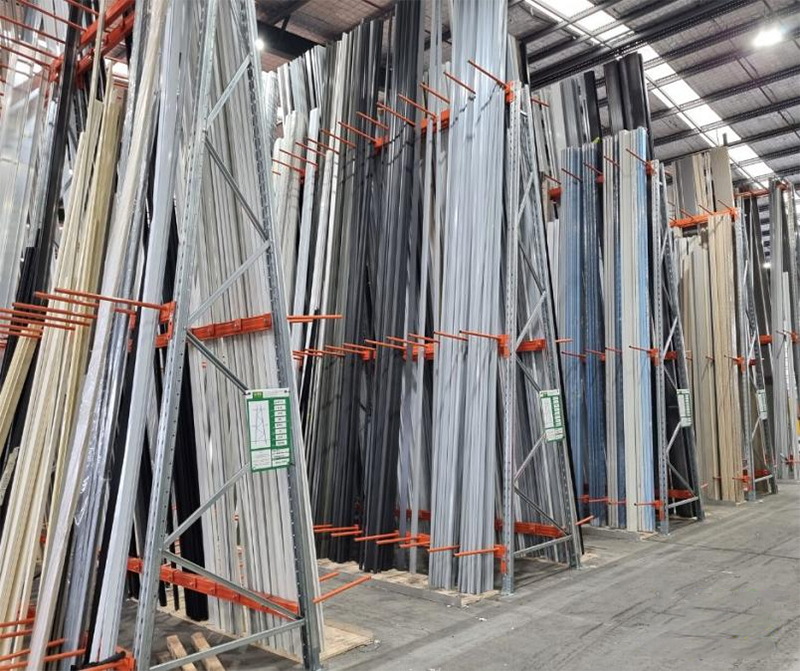
In industries like plumbing, construction, and manufacturing, efficient material storage remains a critical challenge. Traditional methods—such as ground stacking or horizontal shelving—often lead to wasted space, damaged goods, and operational delays. Enter vertical storage rack systems, a modern solution that redefines warehouse efficiency by optimizing space, streamlining workflows, and safeguarding materials. Here’s how this shift transforms operations.
1. The Limitations of Traditional Storage
Wasted Space and Clutter
Traditional horizontal stacking consumes valuable floor space while underutilizing vertical height. Pipes or lumber piled on shelves or floors create disorganized layouts, making it difficult to maximize warehouse capacity1. Over time, this inefficiency compounds as material variety grows.
Time-Consuming Access
Retrieving specific items from stacked piles requires workers to shift layers of materials—a tedious process that risks damaging goods. For example, extracting a buried pipe often deforms adjacent materials, increasing replacement costs and downtime.
2. Vertical Storage Racks: A Modern Solution
Space Optimization
Vertical storage racks leverage unused vertical space by storing materials upright. This design reduces footprint requirements while accommodating more items per square meter. A plumbing supplier reported a 35% increase in storage capacity after adopting these systems, freeing floor space for workflow optimization1.
Enhanced Organization
These racks categorize materials by size, type, or application. Clear labeling enables quick identification, eliminating the guesswork of traditional methods. For instance, Heathrow Scientific’s acrylic vertical storage rack systems hold eight 80-well microtube trays with precision, ensuring easy access in lab settings2.
Material Protection
Vertical storage prevents deformation caused by horizontal pressure. Aluminum or acrylic racks, like Thermo Scientific’s autoclavable designs, securely hold microplates and pipes without bending—ideal for sensitive materials like DNA libraries or construction pipes12.
Inventory Transparency
With dedicated slots for each item, tracking stock becomes effortless. Warehouse managers gain real-time visibility into inventory levels, reducing overstocking or shortages. One furniture manufacturer noted a 50% reduction in inventory errors post-implementation.
3. Measurable Outcomes of the Transition
Faster Operations
Vertical systems simplify retrieval, cutting labor time by up to 40%. Workers no longer waste hours digging through stacks—materials are accessible at a glance.
Cost Savings
Reduced material damage lowers replacement expenses. For example, a U.S.-based distributor saved $15,000 annually by minimizing pipe losses.
Scalability
Vertical storage racks adapt to evolving needs. Adjustable shelves accommodate varying material sizes, making them ideal for industries with diverse inventory, from lab equipment to construction supplies.
Conclusion: Embracing Vertical Storage for Competitive Advantage
Transitioning to vertical storage rack systems isn’t just about reorganizing—it’s a strategic upgrade. By maximizing space, protecting materials, and streamlining workflows, businesses achieve higher productivity and cost efficiency. Whether managing lab samples or industrial pipes, these systems offer a scalable, future-proof solution.
For warehouses still relying on outdated methods, the shift to vertical racks is no longer optional—it’s essential for staying competitive in a fast-paced market.
Copyright © Chairborne Machinery Liaoning Co., Ltd. All Rights Reserved
Technical Support:
